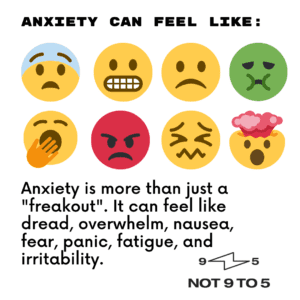 [1]https://www.mayoclinic.org/diseases-conditions/anxiety/symptoms-causes/syc-20350961
[1]https://www.mayoclinic.org/diseases-conditions/anxiety/symptoms-causes/syc-20350961
Writer: Lisa Quigley
Ah, anxiety. The Master of Deceit. There are many misconceptions around anxiety and the differences between feeling anxious and suffering from an anxiety disorder. In either case, it can intrude in such a craftful and subtle way that we struggle to recognize when it has taken over our rational thoughts and responses. Sometimes, by the time we can actually name this brain-body-takeover as anxiety, it feels like a major journey to bring ourselves back to a regulated state.
Such a journey that it just perpetuates and sends us even further into the depths of shame and feelings of inadequacy that anxiety is known to trigger. It is these taunting thoughts that make it so hard to openly talk about what we feel. It’s also the reason why it’s crucial to tell each other ‘you are not alone’ and ‘there is help available to address these experiences.’
Anxiety is an emotion characterized by the feelings of tension, worried thoughts and physical changes like increased blood pressure [2]https://www.apa.org/topics/anxiety. The feeling of anxiety alone is not a mental disorder. Anxiety is a naturally occurring response to stress and pressure that we all feel. Everybody feels tense, worried or nervous from time to time; this is feeling anxious. It is a natural stress response, and in small doses can be a good thing [3]https://ontario.cmha.ca/documents/understanding-and-finding-help-for-anxiety/.
It can be uncomfortable when alerting us to danger, but it can also be a thrilling feeling that enlivens and boosts our energy, creativity, and problem-solving. Anxiety becomes a problem, however, when it becomes persistent, intrusive, and holds us back from living our lives fully.
These feelings may be categorized as an anxiety disorder when they become recurring and impede everyday function or present physical symptoms such as intrusive thoughts, sweating, trembling, dizziness, nausea, fear, panic, fatigue, insomnia, irritability or increased heart rate [4]https://www.apa.org/topics/anxiety.
How an anxiety-related disorder differs from functional anxiety:
- Anxiety can show up unexpectedly and for seemingly no reason
- The anxiety response to a situation may be stronger and more intense than expected
- A person experiences a strong fear of situations that likely will never happen
- Anxiety lasts for a long time even after a situation or problem has been resolved
- The feelings of anxiety feel impossible to control or manage
- A person avoids situations or places that they believe to be a trigger
An anxiety-related disorder will look different from person to person because it is a mental and physical condition, not a characteristic or a personality trait. For example, one person can appear to others as calm and confident while another may seem fearful and nervous, but each could be dealing with an anxiety-related disorder. Anxiety-related disorders affect how a person feels, thinks, and behaves. They are also amongst the most common disorders in Canada as well as the hospitality industry [5]https://www.canada.ca/en/health-canada/services/healthy-living/your-health/diseases/mental-health-anxiety-disorders.html.
It is the combination of shame and lack of understanding that held me back from seeking help and a proper diagnosis of anxiety, as well as depression and ADHD, for over a year. It turns out it is quite a common trifecta for adult women to be diagnosed with due to the way we internalize the symptoms as our own personal defects. Why would I bother talking about my daily struggles when I clearly just need to figure it out and get my shit together?
It took a full year of vomiting almost daily to call my doctor. Vomiting wasn’t on the list of side effects for anxiety on WebMD, so I figured I was in the clear (even though I could check off every other symptom… I still managed to rationalize it). It took being mostly bedridden and lacking all feeling, even sadness or anger, only indifference, to finally open up to my support network about how bad my depression and anxiety had actually gotten.
I am beyond grateful for the family and friends I have and their openness, yet even in full knowing that I would be accepted and held throughout the entire process, I still felt too ashamed. They knew enough, and let’s be real, we often think we are better at hiding our true state from those close to us than we really are.
The fact is though that there are always depths that no one on the outside can understand, until you let them in. And when you do, hopefully it can help you realize just how understood and loved you really are.
Just as symptoms show up differently for everyone, so do the paths of recovery. And let’s be clear, I am not ‘recovered.’ The trifecta is something I live with and manage every day, some days better than others. But no matter what an individual day has in store, I know I have the foundation of therapy, medication, a reliable support network and long walks listening to Brené Brown reinforcing me through.
Being able to name ‘it’ alone changed my life. To actually allow myself to believe that all the thoughts, feelings, and habits I had/have are not all my fault or due to my personal shortcomings was a long process, and liberating. Being able to name it has also helped me educate myself on these disorders, how they interact, and how they have played a major role most of my life without me thinking twice. Before I didn’t think it could be anything other than just how it’s supposed to be.
I had even had quite a few bouts since my late teens of thinking ‘I really need to talk to someone.’ Yet once that heightened wave passed, my brain switched to laughing at myself for being a drama queen and I carried on as ‘normal.’ This routine with myself was a part of what I thought was normal for a very long time.
I could call it unfortunate that I had to sink to such a dark space to finally ask for help. I could call it embarrassing and shameful that it took me so long. As someone who has always felt at least moderately educated on these topics; as someone who is lucky enough to have a close network; and as someone who has been the place of safety for loved ones to open up about their own experiences with mental illness and suffering, I could. But I will not call it any of these things, because everyone’s journey is different, at every single point along the way, including my own.
There is no right or wrong, and there is definitely no going back. We can only hope to learn from each other, and ourselves, to try and navigate the complexities of mental health as best we can.
And no matter how many WebMD lists or articles we skim through, or even professionals we talk to, I personally still think humans learn the most from connecting to each other and sharing their experiences. Because as humans, all life really is, is a long string of experiences and connections.
Anxiety and mental illness tricks us into thinking we are unworthy of these relationships, that we are undeserving of the moments we see everyone around us enjoying. But when we actually open up about our internal struggles, we learn that not only are we not alone in feeling this way, but we are met with compassion, support and curiosity. You are not your thoughts, but the awareness of those thoughts. Be kind to yourself.
To learn more about anxiety check out Primary Concerns and CNECTed on our new CNECTing platform here.
To read more on what anxiety may look like check out: Toxic Productivity and Procrastination: Emotional Avoidance
ID: Anxiety can feel like: a worried face, a stressed face, a sad face, a sick face, a yawning face, an angry face, a scared face, a mind-blown face. Anxiety is more than just a “freakout”. it can feel like dread, overwhelm, nausea, fear, panic, fatigue, and irritability. A Not 9 to 5 logo in the bottom right corner.
References



